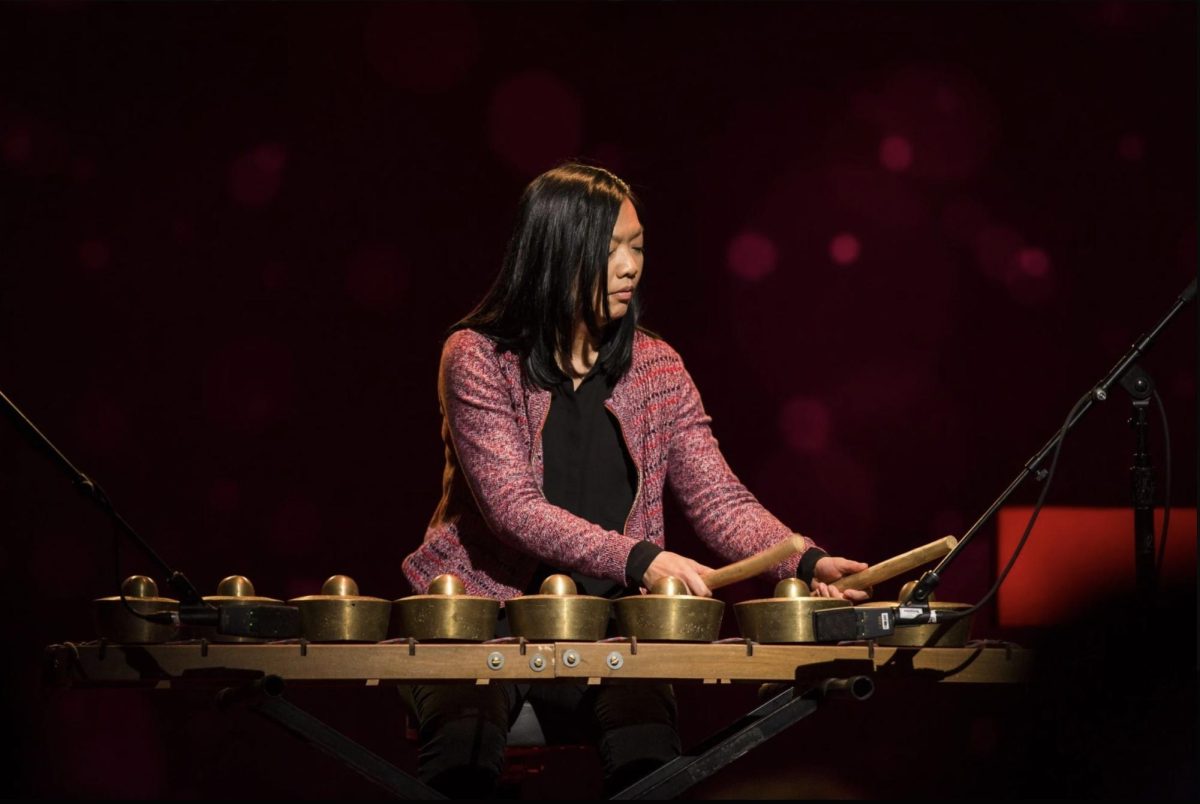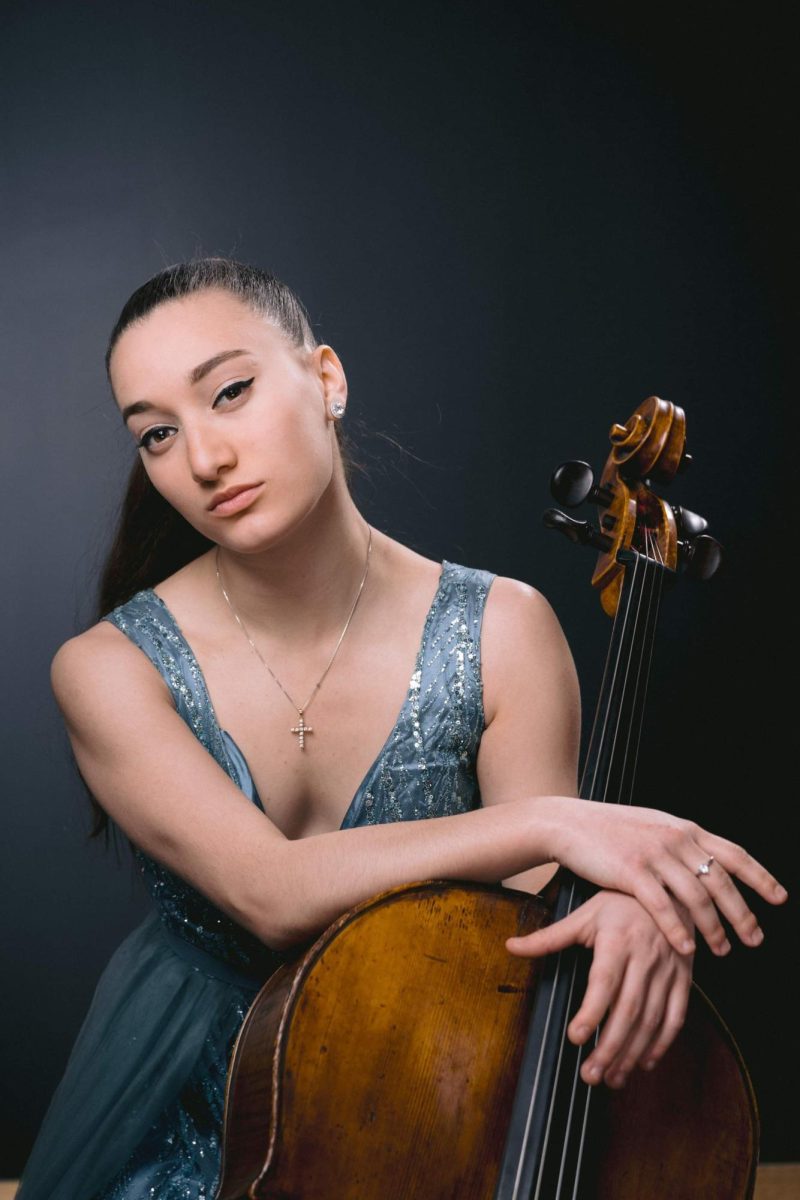Susie Ibarra is a Filipinx composer, percussionist, and sound artist. Many of Ibarra’s projects focus on both cultural and environmental preservation around the world, such as glacial sound mapping in Greenland, and effects of desertification as told by underrepresented female voices in Morocco. From Oct. 23–27, Ibarra visited Oberlin to teach a masterclass, lead a soundwalk, and perform with Conservatory students Friday in the David H. Stull Recital Hall at 7:30 p.m. Ibarra’s visit to Oberlin was made possible through the Crimson Collective.
This article has been edited for length and clarity.
Why were you interested in soundscapes and what has your work with soundscapes consisted of?
As I mentioned in the talk, I’m very sensitive to how we exist in spaces, and I found that I often wanted to integrate environmental sound into my compositions. That led me into a deep exploration of different diverse habitats and how closely related we are to them. I then studied and derived four math equations that we can use to calculate the rhythms of water in oceans, streams, and glaciers, and to look at the resonance and echos found in natural canyons.
With glaciologist and geographer Michele Koppes, I sonically mapped glacial runoff in Alaska, Greenland, and the Himalayas. Everything recorded becomes a memory because the water’s changing, and it won’t sound like that ever again. I think everybody has a connection to water, right? So recording these changing rhythms is really part of a larger dialogue about the changing climate and our relationship with it. Telling stories through audio; it’s a great way to bring people to a place.
How do different natural landscapes inform the instruments and music genres from their respective regions? Have you experienced that in your own field research and travels?
Some of the forests that I’ve been in are mostly bamboo. That sound is just amazing. There’s a lot of traditional music that’s interdependent with forests. I teach a course on forest rhythms from the northern Philippines. It’s really about community – unlike in Western music, where you’re asking, “Where is the downbeat?” With interlocking rhythms you’re asking, “Where’s my neighbor?” You don’t have to count, you just have to find your neighbors and play your part to your neighbor and so forth. Then you become one instrument, just like how underneath the ground, trees share their roots and resources.
In your masterclass on Tuesday, you used the phrase “sonic meditation.” What do you mean by that?
It’s about a sense of place and presence. Not everything that I play is quiet, and my music can be very developed, but the process of playing and listening to this music is meditative, just as you can have moving meditation.
I was invited to The TANK Center for Sonic Arts in Colorado last year, where I played and recorded solo in this resonant tank where you play a note and it lasts for 40 seconds. It changes how you feel music and sound, in regards to time. For this landscape opera that I’m writing, I started traveling around in canyons and I played on these 50 million year old lithophones, recording echoes. It was just so special, the sound, and reflective in nature.
What do you think about the practice culture seen in many conservatories?
I think practice is very personal. It’s crucial that practice integrates into your personal daily routine and you’re not told to practice a certain way. College is an opportunity to focus and lean into areas that you never had an opportunity to. Finding a way to absorb these things as you nurture your creativity and development is entirely personal. That doesn’t mean you’re not going to be learning certain fundamentals for your instrument, but I think the way you approach those fundamentals is up to you.
In a lot of traditional cultures in the Philippines, for instance, people learn music in their dreams. There’s a certain friction when entering a new community. How do you integrate different cultures within your own artistry and self? What do you receive and take in, and what are things that maybe you don’t own and yet still have an understanding of and are open to learning?
What does being an interdisciplinary artist mean to you?
I’ve always been collaborating with scientists, but it’s not as if I searched them out. We find ourselves in those moments. There are a lot of parallels between environmental science and music, but there’s a point where they diverge: music is very product-driven, whereas science is really based on inquiry, not necessarily about any results. That’s how I feel about my research, “Rhythm in Nature.” I feel like we’re making these certain inquiries with other artists and asking, “How do we connect that with an ecosystem and take it even further?” We’re all part of a larger ecosystem and we’re researching it and developing it. And it really takes all of us, because nature is massive.
Some people have an idea that they’re going to be a sound artist, but it’s not as if I ever said that until I realized that field recording was as important as me being in the studio, or being on stage or sound mapping. They’re all different and I like to investigate the sound in all of these different disciplines; I don’t think one is more important than the other.









